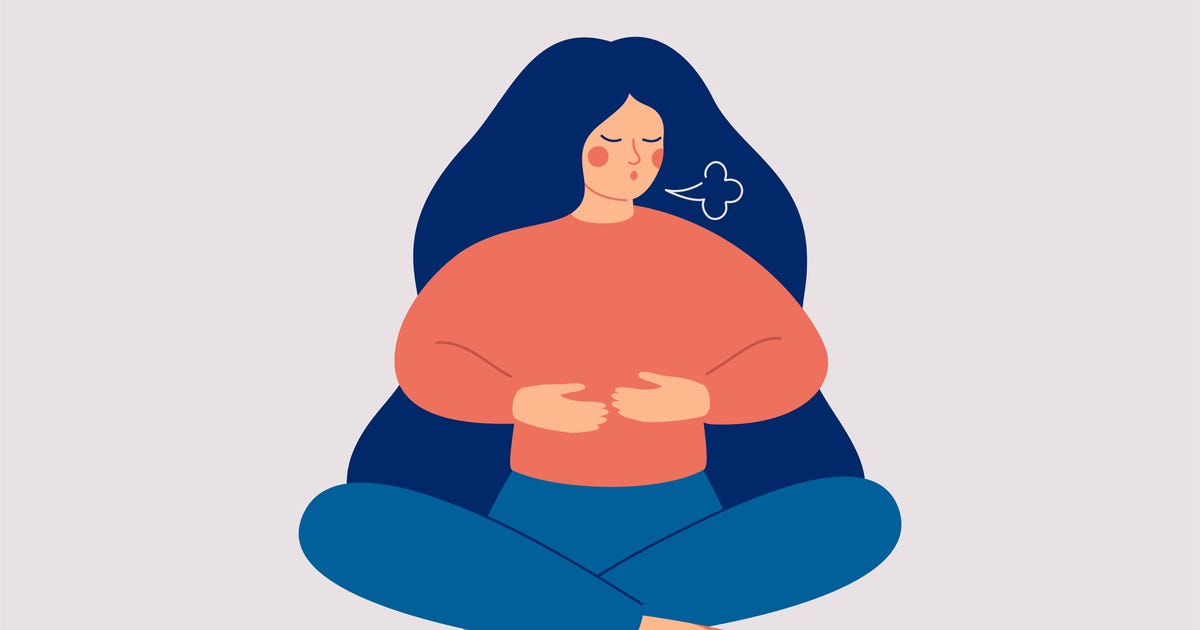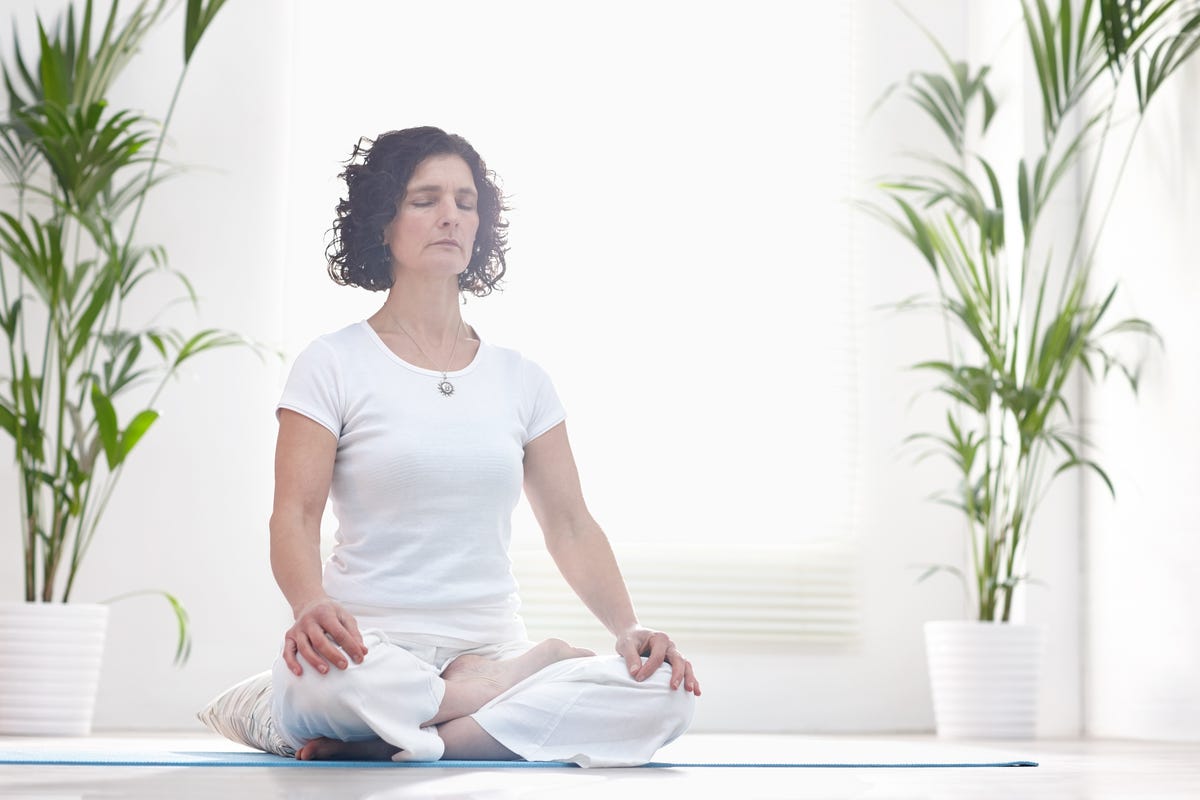What are breathing exercises examples of breathing exercises what are breathing exercises easy deep breathing exercises exercises to help breathing 5 easy exercises to lose belly fat 5 easy ways to make money

5 Easy Breathing Exercises to Relieve Stress and Relax
Have you ever stopped to think, "what happens when we breathe with purpose"?
Most of us don't pay much attention to our breathing: It's essential to our existence, but we tend to take it for granted. The way we breathe has a direct impact on our health, stress levels and even emotions.
Breathwork has recently become so popular that Gwyneth Paltrow dedicated a whole episode to it on her Netflix series, The Goop Lab. The show highlights various techniques, including breathwork, to overcome mental and physical obstacles. However, breathwork dates back to early Hindu yogic breathing practices known as Pranayama. Prana in Sanskrit translates to "vital life force," while Yama means "to control."
Modern science shows that breathwork can transform your health, and the best part is that it's something anyone can do anytime, for free. Here's to try it at home.
What is breathwork?
Breathwork is essentially controlled breathing where you intentionally regulate the flow of your breathing patterns to change your mental, emotional and physical state. In every breathing exercise, you will be asked to become aware of your breath and how it makes you feel. Its purpose is to create a balance between the mind and body. There are multiple breathwork techniques that you can try, and each one has a specific effect on your body.
What are the benefits of breathwork?
If you are looking to incorporate new daily habits to help ease stress, anxiety or improve your overall well-being, breathwork may be what you are looking for. People often practice breathwork exercises to help promote mental, emotional, physical and spiritual well-being.
According to one study, breathwork can improve cognitive performance and reduce stress in otherwise healthy adults. The same study found that controlled breathing can potentially help reduce health issues associated with chronic stress.
Similarly, a systematic review that analyzed eight studies on the effects of breathwork on people with chronic obstructive pulmonary disease concluded that patients with COPD who practiced pursed-lip breathing had better endurance during physical activity.
Slow, paced breathing has been linked to:
- Improved mood
- Greater alertness and vigor
- Increased relaxation
- Less anxiety and depression
- Reduced symptoms of anger

Breathwork techniques for beginners
There are many breathing exercises you can do to help you clear your mind, relax and even improve physical endurance. We've compiled a few of our favorite techniques that are perfect for beginners since they are simple, quick and easy to follow.
The 4-7-8 breath: For when you're feeling stressed
The 4-7-8 breathing pattern was designed by Andrew Weil, M.D., and is known for being the "relaxing breath." It's a simple yet effective technique for de-stressing that consists of inhaling for four counts, holding the breath for seven counts, then exhaling for eight counts. Many people use this particular technique to relieve anxiety and attain better sleep.
Weil states on his website that "practicing a regular, mindful breathing exercise can be calming and energizing and can even help with stress-related health problems ranging from panic attacks to digestive disorders."
How to practice
The first thing you want to do is place the tip of your tongue against the roof of your mouth, right behind your front teeth, and sit in an upright position.
Then, follow these steps in the cycle of one breath:
1. With your mouth closed, inhale through your nose to a count of four.
2. Hold your breath for seven counts.
3. Exhale through your mouth, making a whooshing sound for eight seconds.
4. Repeat steps one to three for a total of four breath cycles.

The box breath: For clearing the mind
Box breathing, also called four-square breathing, is an easy yogic technique used to slow down your breathing. This type of breathing exercise is so powerful that people with high-stress jobs, like the military, often use it to maintain calm when their bodies go into "fight-or-flight" mode. Its primary focus is to distract the mind while you count and fill your lungs with oxygen.
Unfortunately, there aren't many studies around the effectiveness of box breathing since it's a relatively new technique, but there are studies that have found that similar breathing exercises help induce tranquility and increase attention span.
How to practice
Box breathing is one of the simplest breathwork techniques and can be done almost anywhere -- at your desk, in your car or even at a busy coworking space. All you need to do is follow these simple steps.
1. Exhale all of the air in your lungs.
2. Inhale for four counts.
3. Hold your breath for another four counts.
4. Exhale for four counts.
5. Repeat three to four times.

Alternate nostril breath: For optimal respiratory endurance
Alternate nostril breathing, also known as Nadi Shodhana, is another breathwork exercise intended to soothe the mind and body while managing emotions. This breathing exercise is a pretty common practice in yoga and meditation. Nadi Shodhana in Sanskrit means "channel cleaning breathing." As the name suggests, this technique focuses on breathing through one nostril at a time.
A small study conducted in 2017 analyzed the effects of this type of breathing practice on healthy, competitive swimmers. The study concluded that practicing alternate nostril breathing for 30 minutes a day, five days a week for 30 days, helps enhance respiratory endurance. Even though this initial study showed promising results, further research is needed to expand on the long-term effectiveness of alternate nostril breathing.
How to practice
You can practice alternate nostril breathing by yourself. However, consider asking an experienced practitioner to guide you through your first time to ensure that you are doing it correctly.
First, sit down in a comfortable position with your back upright, then follow these steps:
1. Place your left palm over your lap and bring your right hand in front of your face.
2. With your right thumb, close your right nostril. If comfortable, you can place your forefinger and middle finger on the center of your forehead.
3. Close your eyes and inhale slowly through your left nostril.
4. Once you've taken a deep inhale, cover your left nostril with your ring finger and hold your breath for a few seconds.
5. Uncover your right nostril and exhale.
6. Slowly inhale through your right nostril.
7. Cover your right nostril again (your ring finger still closing your left nostril) and hold for a few seconds.
8. Uncover your left nostril and slowly exhale, pausing again at the end of the exhale.
You can repeat these steps for up to five minutes.

Belly breath: For when you need to relax
Belly breathing, also called diaphragmatic breathing, fully engages your abdominal muscles, diaphragm and lungs. Contrary to normal breathing, diaphragmatic breathing expands the abdomen when inhaling rather than the chest. Our normal breaths tend to be shallow, but with belly breaths, you slowly fill your lungs with air making the breath deeper.
Belly breathing creates a deep sense of relaxation, and is closely associated with meditation. Research has shown that meditation may reduce blood pressure and ease anxiety, depression, insomnia and chronic pain symptoms.
How to practice
You can practice belly breathing lying down or sitting in a comfortable position.
1. Place your left hand over your heart and your right hand over your belly.
2. Inhale slowly, filling up your belly with air.
3. Purse your lips and exhale slowly, feeling your stomach contract.
4. Repeat up to 10 breath cycles.

Pursed-lip breathing: For controlling shortness of breath
Pursed-lip breathing is a common technique used to control hyperventilation and shortness of breath. When practicing this breathing technique, you allow yourself to slow your breathing pattern, making each breath deeper. With pursed-lip breathing, you bring more oxygen to your lungs which helps you relax.
A 2021 study found that pursed-lip breathing may alleviate shortness of breath, help you gain control over your breathing and increase your sense of relaxation. More research is needed to conclude the long-term benefits of this breathing exercise.
How to practice
The first thing to do is sit down in a comfortable, upright position and relax your shoulders. Become aware of any tight muscles around the face and release the tongue from the roof of your mouth.
1. With your eyes closed, inhale through your nose for two seconds.
2. Pout your lips as if you are going to blow a whistle.
3. Breathe out through your mouth for four to six counts.
4. Repeat for five to 10 cycles.

Tips for breathwork beginners
Consult with your health care provider
Breathwork is generally considered to be low risk and safe for most people. However, it's important that you consult your doctor before trying out any new breathwork exercises, especially if you are pregnant or have an autoimmune disease. There is evidence that breathwork could be related to increased heart rate in rheumatoid arthritis and lupus patients.
Research the different types of breathwork exercises
We covered five breathwork techniques that are great for beginners, but there are many others that you can try. Since there are so many methods, classes and even teachers, it's important that you do your research to find the right technique for you.
Find a trusted practitioner near you
After you've decided which breathwork method is best for you, you can look up teachers or practitioners near you or online. Breathwork Alliance is a great resource to use if you are unsure where to start.
Listen to your body
Once you start incorporating breathwork into your routine, you must become aware of how it makes you feel in different parts of your body. Notice if it makes you feel relaxed, or perhaps, notice pain somewhere you hadn't experienced before. If you have an adverse reaction, pause your practice and consult your doctor.
There are many benefits associated with breathwork techniques, and a big part of that is letting go of any tension you may be holding in your body. Let yourself feel everything and enjoy the process.
The information contained in this article is for educational and informational purposes only and is not intended as health or medical advice. Always consult a physician or other qualified health provider regarding any questions you may have about a medical condition or health objectives.
Source
Blog Archive
-
▼
2022
(176)
-
▼
November
(30)
- The Dark Side Of 'What I Eat In A Day' Videos
- Airlines Seek More 5G Protections, Warning Of Mass...
- Dell XPS 13 Review: A High-end Ultrabook That Hits...
- More People Should Watch The Most Underrated Sci-F...
- Loud, Gas-Belching Leaf Blowers Will Soon Be Illeg...
- Best Solar-Powered Home Security Cameras For 2022
- Ford Bronco Raptor RLE Brings The GOAT To Rocket L...
- Google: Android 13 Beta 2.1 Update Is Available Now
- Samsung Teases Galaxy S22 February Debut, Hints At...
- DJI Osmo Mobile 3 Gimbal Bundle Is Just $85 Right ...
- Blow Them Away As Han Solo In Hard-core 'Star Wars...
- Dodge Charger Super Bee Offers Standard Drag-Strip...
- Best Identity Theft Protection And Monitoring Serv...
- Best Buy 3-Day Sale: Last Day To Save On Microsoft...
- Tesla Apple CarPlay Hack Claims To Work On Any Tes...
- Google ChromeOS Flex Is Now Ready To Run Your Old ...
- IOS 16: How To View Saved Wi-Fi Passwords On Your ...
- Google Offers First Look At Android 13
- Galaxy Watch 5 Leak Shows 360-Degree Views Of Upco...
- 9 Great Reads From CNET This Week: Webb Telescope,...
- HP Spectre 13t-3000 Ultrabook Review: A Slim Lapto...
- 5 Easy Breathing Exercises To Relieve Stress And R...
- Valve Confirms Steam Deck Will Be 'Multigenerational'
- Apple, Google, Other Tech Giants Urge Texas To Dro...
- T-Mobile Announces A $200 5G Smartphone
- Intel Wants To Produce Chips For Cars Amid Semicon...
- Best Internet Providers In Seattle
- Can You Insure Bitcoin? Here's What You Need To Know
- Asus ZenBook Pro 15 Review: A Second Screen Under ...
- Amazon Says Prime Day 2022 'Biggest' Ever, As US O...
-
▼
November
(30)
Total Pageviews
Search This Blog
Popular Posts
-
Resepi ayam goreng celup tepung bestari original, resepi ayam goreng celup tepung bestari kecil, resepi ayam goreng celup tepung bestari kot...
-
Underwriting for mortgage takes how long how long underwriting takes how long is underwriting for home loan how long for underwriting mortga...
-
Halo tv show paramount plus release paramount halo tv series halo paramount show episodes halo series paramount plus halo tv show on paramou...
